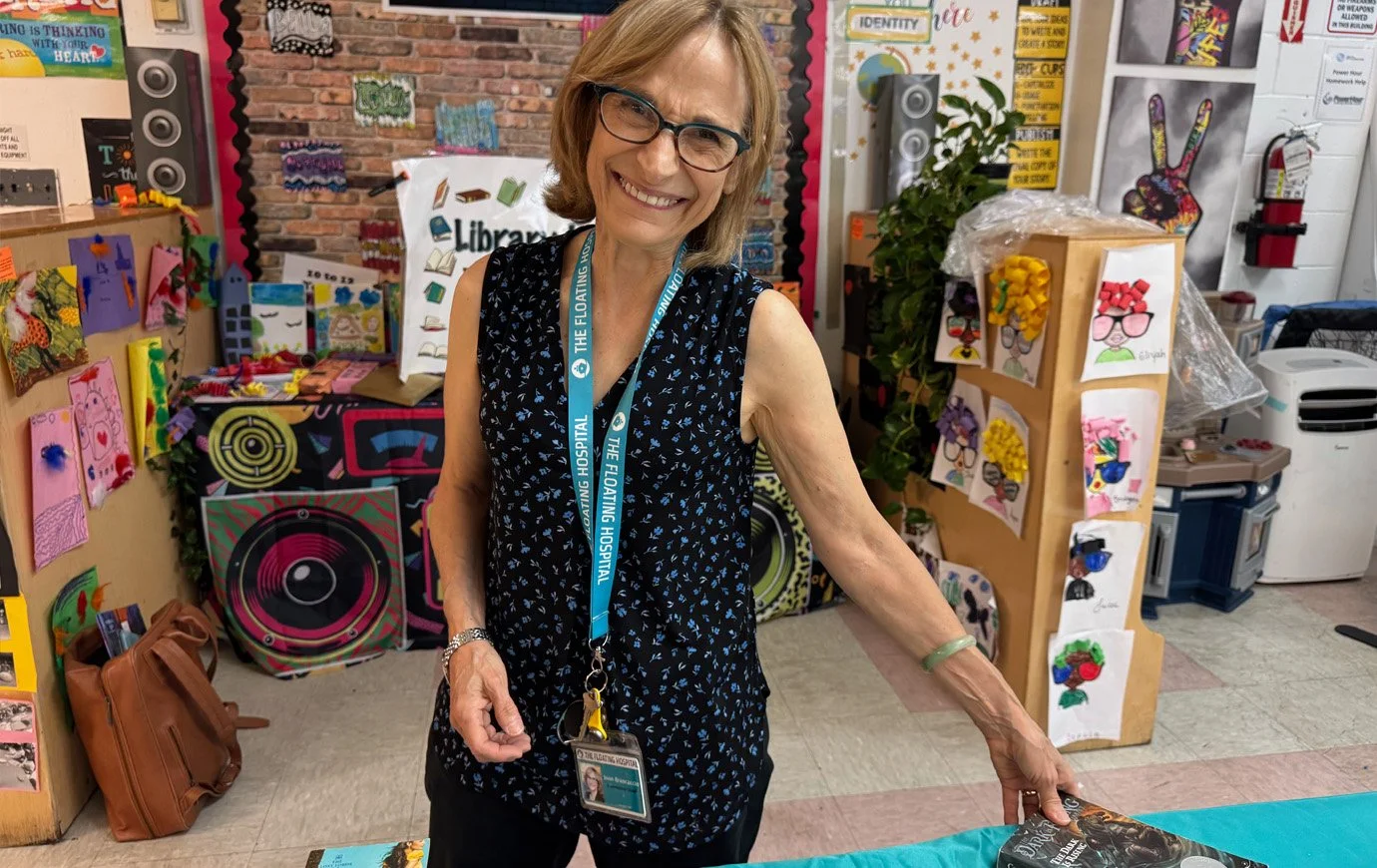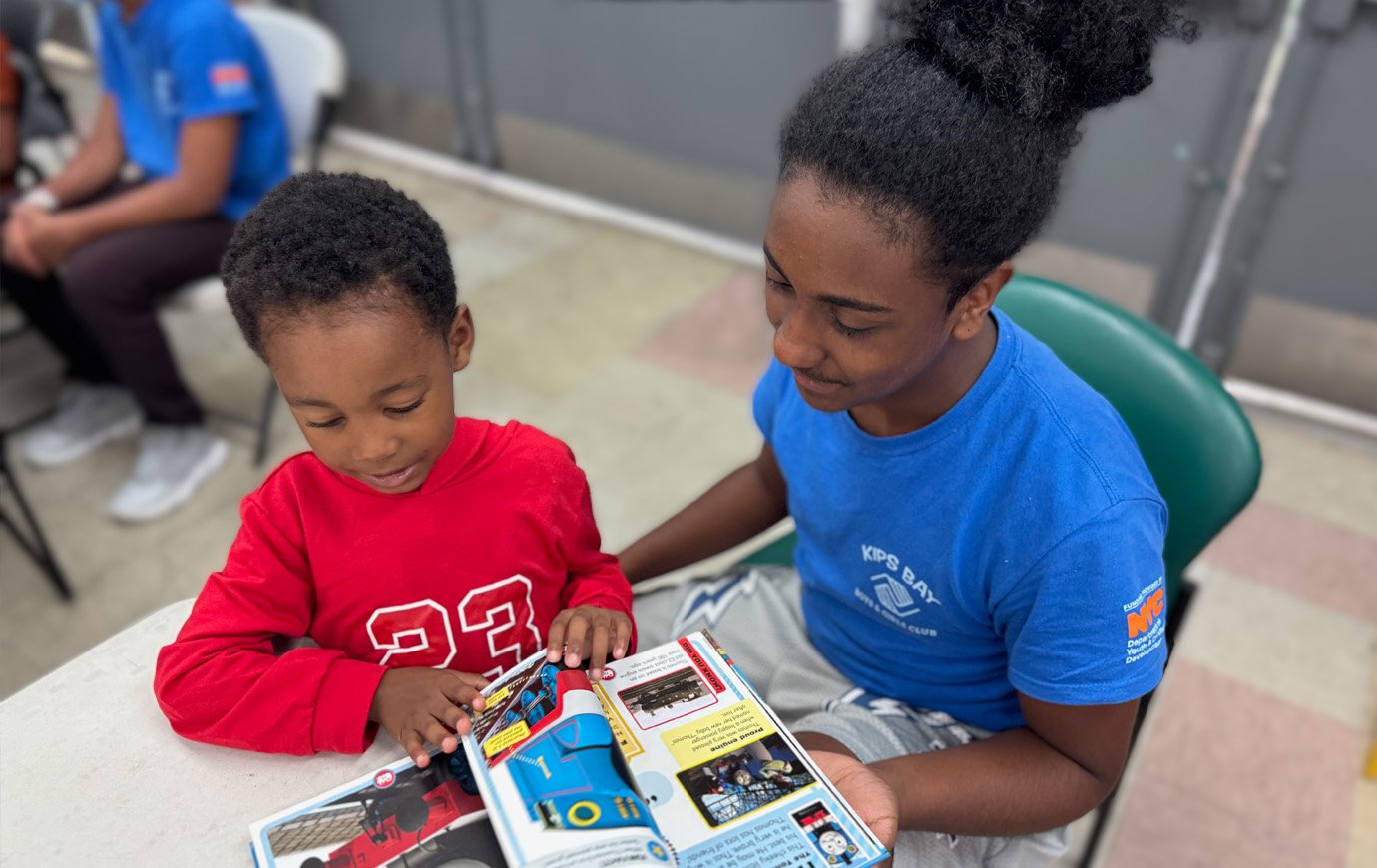Making the Most of Retirement
What started with a vision of The Floating Hospital waiting room filled with patients reading books has turned into a reading program that travels from the main clinic to our other sites at family shelters in the Bronx and Brooklyn.
Joan Brancaccio is the mastermind behind the new “Story Time” program, which is putting books in the hands of all our patients, young and old, in English and other languages. A founding member and the chair of our Foundation Board, she also recently took on the management of our volunteer program.
It was many years ago that she recalls meeting Floating Hospital President Sean Granahan through her brother and sister in-law. “He invited them, and they invited my husband and me, to join a Floating Hospital boat ride. I was so taken with Sean and with the work that The Floating Hospital does, I immediately pledged to do whatever I could to help.”
She is joined In the Story Time effort by Cynthia Davis, director of outreach, and Vicki Jackson, the Department of Education and domestic violence safe houses coordinator, who suggested bringing books into the shelters we serve and also reading to the children there.
The health education department has books for children that have been donated by sources such as Reach Out and Read, which gives books to clinics and pediatricians to distribute to their patients up to age 5. But Brancaccio’s plans were larger and broader. “I wanted to fill the waiting room with books,” she said.
Because of the the health education efforts, “the first thing I learned was that there's not a shortage of books in the clinic itself.” Dr. Meghan Miller, director of health education, has contacts to bring in more books as well. “What we don't have is an allotment in the shelters and we don't always have books in all age groups. That becomes the challenge.”
The idea has been guiding her since her retirement in March as a managing director at Wells Fargo, and Bank of America before that, where she designed, developed and delivered financial service products to large global companies during a 40-year career. She describes herself as “a New York City girl. I was born and raised in Queens and attended city public schools all the way through College.” She graduated from Queens College with a degree in theater. Her husband and she are empty nesters in Manhattan, with two grown children and a granddaughter.
In addition to holding board and volunteer positions at The Floating Hospital and other organizations, she said she loves travel (to 56 countries!), needlepoint, adult learning—including a recent vacation where she studied Jane Austen at Oxford University—and supporting her favorite team, the Yankees. Her first volunteer opportunity with us was distributing backpacks and back-to-school supplies at the clinic we run at Queensbridge Houses. That is also when she met Davis, “and became even more enamored of The Floating Hospital.” For many years she has helped at our Candy Cane Lane event during the holidays and at Camp Rise Up.
Being a volunteer for so long has brought the needs of our program into sharp focus. She has three goals as volunteer manager: to recruit the amount of volunteers we need, to ensure that they know they are making an important contribution to our community, and to encourage more involvement by putting them on a donor or board member track.
Since she first had the idea for Story Time, she has been in planning mode. “I thought my biggest challenge was going to be getting books. Turns out, getting books isn't all that hard,” she said. She keeps some overflow in her apartment when she runs out of space in the clinic. “The biggest challenge is keeping a steady flow of books, so that I'm not inundated. They’re out for the kids in the waiting area to grab if they want them. I've asked them to let me know as the supplies run low, and we'll just keep replenishing them.”
Since most of these early discussions were happening over the summer, when our internship program was taking place, Davis suggested that the interns go to the shelters and read to the kids. “It was a great idea,” Brancaccio said, “and that’s what we did.”
The first Story Time session took place at the Legacy Family Residence in southeastern Brooklyn. The shelter staff told her they could use all kinds of books, so she brought an assortment. The reading took place in a large community room that had bookshelves. Sophia Binder, a health education specialist; Olivia Graffeo an assistant in the development department, and two interns helped her with putting up signs and placing the books on the shelves. Brancaccio sorts the books when they are donated into different age groups and categories so they are ready for whatever need arises.
Then, “the families came and it was adorable,” she said. The kids chose a book, and the interns sat and read to them. “And it was really very sweet. We had one little boy there who was so attentive.” Previously, Legacy had a lending library, and the books had to be returned. Brancaccio told everyone to keep the books they had chosen. “My whole purpose of doing this is to have lots of books so people can take and keep them.” She told the shelter, “I’ll just keep refreshing the books, bringing more. Let people have the books. Let the kids own books. And that's what is happening.”
Brancaccio collects books from The Book Cellar, a New York Public Library branch on York Avenue that sells books to support the library. “They have more books than they can sell,” she noted. After connecting with them, “they have given us hundreds and hundreds of books.” She also had a contact in an Upper East Side public school. “On the last day that the teachers were there, they collected books from their classrooms that they didn't need anymore.” She ended up with 10 cartons of books from them. “And then friends, family, donations, things like that.”
Her goal is to develop a cadence where there are not too many books one day and then nothing for months. She also wants to be sure she isn’t asking too much of the same people. What they are currently lacking are baby books and Spanish language books for adults. With the baby books, she noted the irony was that “those are the easiest to give out, right? Because babies will take anything.” As for the Spanish language books, “I can't tell you how many women in the clinic have asked me if I had any books in Spanish for them, and I don't. So I have people helping me look for those.” Recently, she has asked publishers of children’s books and Spanish language books for donations as well.
As children age, they may become less interested in books, she observed. But she loves when she’s in the clinic with an armful of books and “I see a kid notice that I'm carrying books, and suddenly their eyes get really wide. You can see they've seen books, and they're wondering what those books are. And then I go over to those kids and say, ‘you can take whatever book you want.’ Because kids who love to read, just love to read. And part of this is getting kids interested in reading. It's also for kids living in shelters and kids who have had a really hard time, to give them books, if they love books.”




